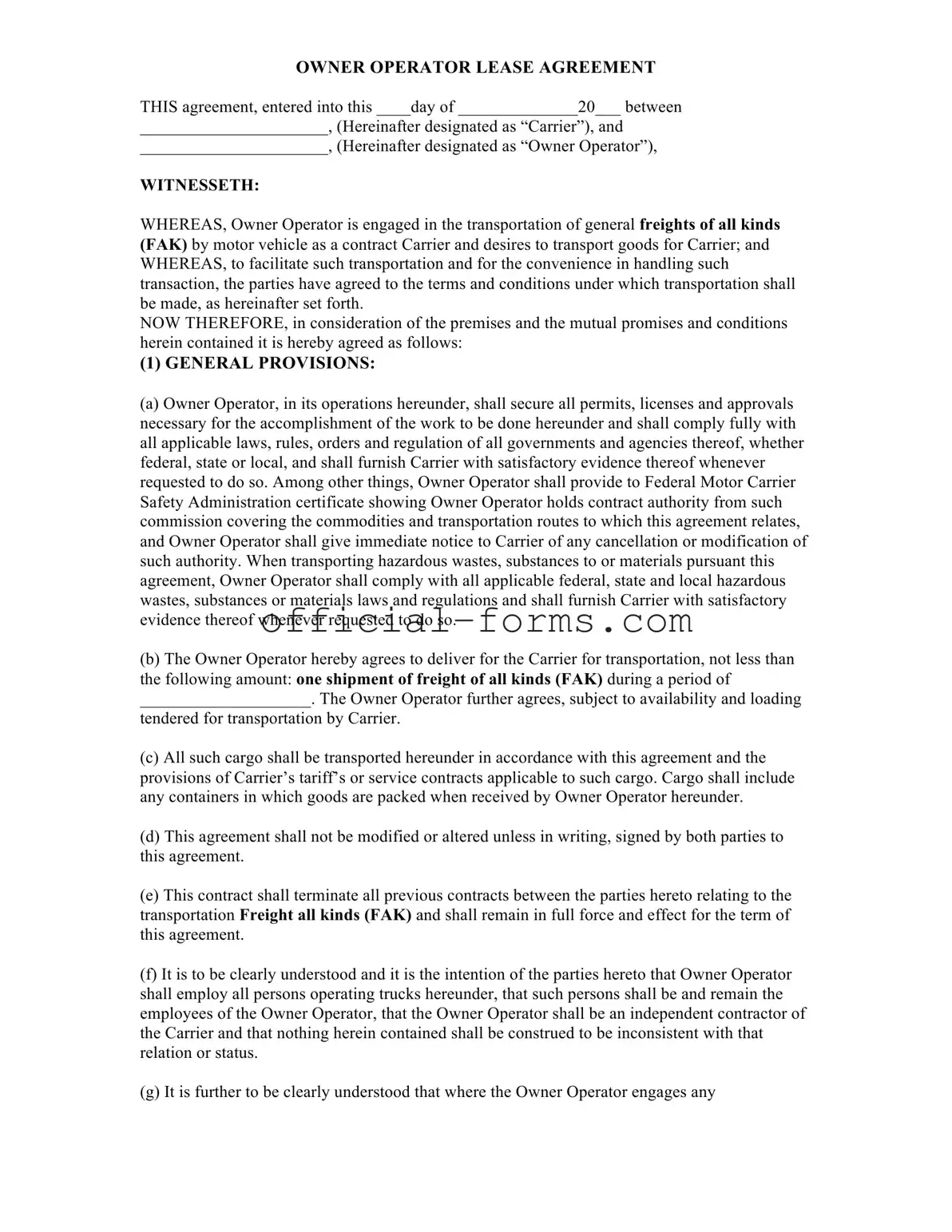Filling out the Owner Operator Lease Agreement form can be straightforward, but many make common mistakes that can lead to complications. One frequent error is failing to complete the date section at the top of the agreement. This detail is crucial as it marks the official start of the contract. Without a clear date, disputes may arise regarding when the terms were agreed upon.
Another mistake is neglecting to fill in the names of both the Carrier and the Owner Operator. Leaving these sections blank can create confusion about who is involved in the agreement. Both parties need to be clearly identified to avoid any potential misunderstandings.
People often overlook the importance of detailing the specific period for which the Owner Operator agrees to deliver freight. This section should not be left blank. A defined time frame helps set expectations and can prevent disputes about delivery timelines.
Many individuals also fail to provide adequate evidence of necessary permits and licenses. The agreement requires that the Owner Operator secures all relevant approvals. Not including this information can lead to legal issues and delays in transportation.
Another common oversight is not adhering to the requirements for insurance coverage. The form specifies that the Owner Operator must comply with certain insurance standards. Skipping this step can expose both parties to unnecessary risks and liabilities.
Additionally, it is vital to take signed receipts for deliveries. Some people forget to include this detail, which can complicate proof of delivery and accountability. Retaining these receipts for at least two years is essential for record-keeping and compliance.
People sometimes ignore the confidentiality clause. Not understanding its importance can lead to unintended disclosures of sensitive information. Both parties must respect the confidentiality terms to protect their business interests.
Finally, failing to sign the agreement is a critical mistake. Without signatures from both the Owner Operator and the Carrier, the contract is not legally binding. This step is essential to finalize the agreement and ensure that both parties are committed to the terms outlined.
